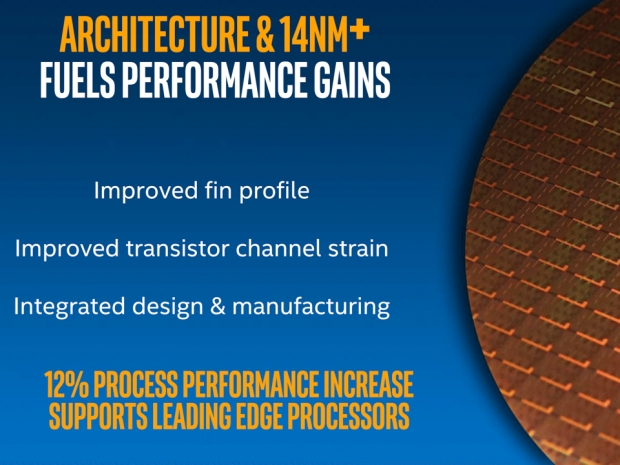The new chips are expected to become available starting in September “with over 100 designs” to choose from in the fourth quarter of the year, according to a company slide presentation.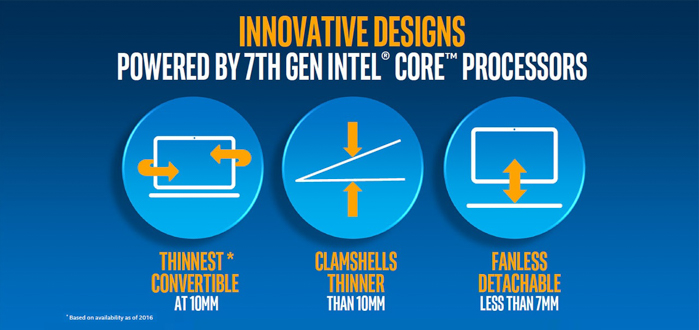
Desktop, high-end notebook chips launching in January
Intel’s seventh generation Core series was revealed last November in a series of slides from Benchlife.info claiming “increase core performance” on the same LGA 1151 desktop socket as 14nm Skylake chips, with three quad-core desktop power envelopes at 35 watts, 65 watts and 95 watts, respectively. In late July, the company shipped its OEM Kaby Lake chips to PC builders for use in complete systems beginning in the fourth quarter of this year, although sources in the upstream supply chain and AnandTech both claim that desktop and high-performance notebook chips have been pushed back until January to address costs for system vendors.
Intel's 7th-gen Y-series and U-series announced
Today, Intel has revealed its Y-series and U-series mobile processors with thermal power envelopes ranging between 4.5 watts and 15 watts, similar to current Skylake designs.
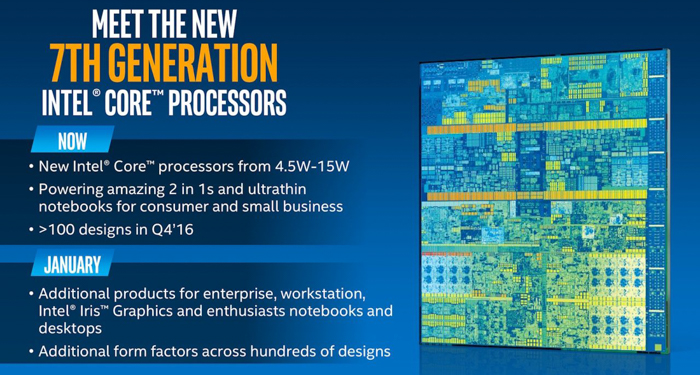
Source: Intel
The Y-series features the Core m3 7Y30 with two cores and four threads, a 1GHz base clock (2.6GHz Turbo), Intel HD 615 graphics (Tier 2) and a 4.5W TDP. In the mid-range segment is the Core i5 7Y54 with two cores and four threads, a 1.2GHz base clock (3.2GHz Turbo), Intel HD 615 graphics (Tier 2) and a 4.5W TDP. On the higher end, there is the Core i7 7Y75 with two cores and four threads, a 1.3GHz core clock (3.6GHz Turbo), Intel HD 615 graphics (Tier 2) and a 4.5W TDP.
The U-series features the Core i3 7100U with two cores and four threads, a 2.4GHz base clock (3.1GHz Turbo), Intel HD 620 graphics (Tier 2) and a 15W TDP. In the mid-range segment is the Core i5 7200U with two cores and four threads, a 2.5GHz base clock (3.1GHz Turbo), Intel HD 620 graphics (Tier 2) and a 15W TDP. On the higher end, there is the Core i7 7500U with two cores and four threads, a 2.7GHz base clock (3.5GHz Turbo), Intel HD 620 graphics (Tier 2) and a 15W TDP.
As we mentioned last week, the folks at NotebookCheck discovered a slide detailing some additional mobile ULV parts that should be available in the second quarter of 2017, featuring a 15W U-series quad-core design for thin-and-light notebooks and an 18W H-series quad-core design for gaming notebooks.
300 to 400MHz clockspeed increase, native 4K media support
For the most part, the difference between Skylake and Kaby Lake on the surface is a slight 300 to 400MHz increase in clock speeds, with the addition of improved BCLK adjustments on unlocked models, native USB 3.1 support, native Thunderbolt 3 support, native HDCP 2.2 support, full fixed-function HEVC main10 and VP9 10-bit hardware decoding. The latter two features will make Kaby Lake-based systems more suited for 4K 3840x2160p content playback, especially if the source is copyright-protected.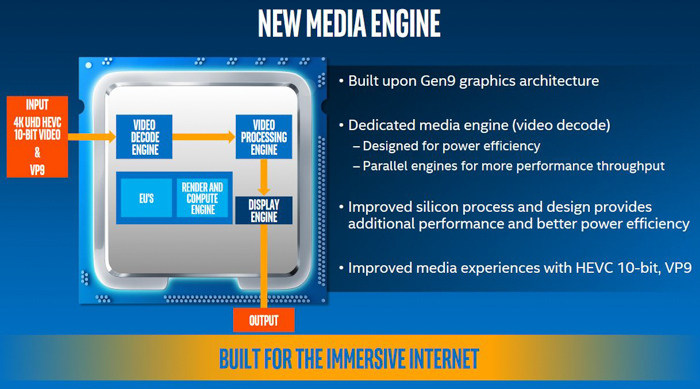
Source: Intel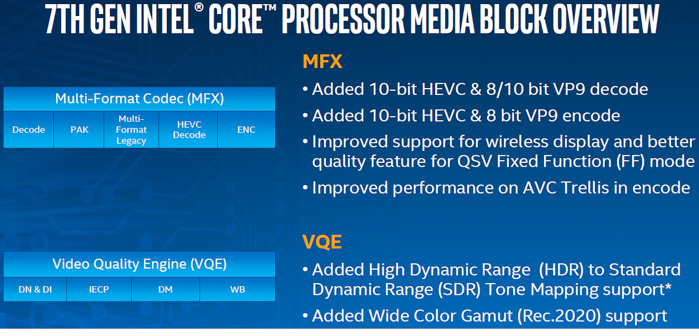
Source: Intel
In its “Video Quality Engine,” the company has also added High Dynamic Range (HDR) to Standard Dynamic Range (SDR) tone mapping along with support for Wide Color Gamut (Rec.2020). The folks at AnandTech have outlined some of the more technical components of Kaby Lake’s media capabilities which can be found here.
12 percent increased productivity, 19 percent increased Web performance
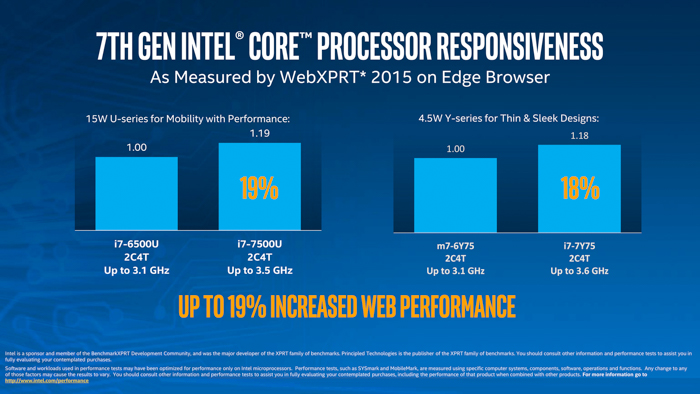
The benchmark Intel is using for its generational Skylake to Kaby Lake comparison is between its 15-watt U-Series notebook processors, the 14nm Core i7 6500U and the recently announced Core i7 7500U. In SYSmark 2014, the Core i7 7500U achieves 12 percent “more productivity performance” while in WebXPRT 2015, the same processor shows a 19 percent improvement in “everyday tasks” such as Web browsing, photo editing and email among others.
Most upgrades to Kaby Lake will be 5-year old PCs or more
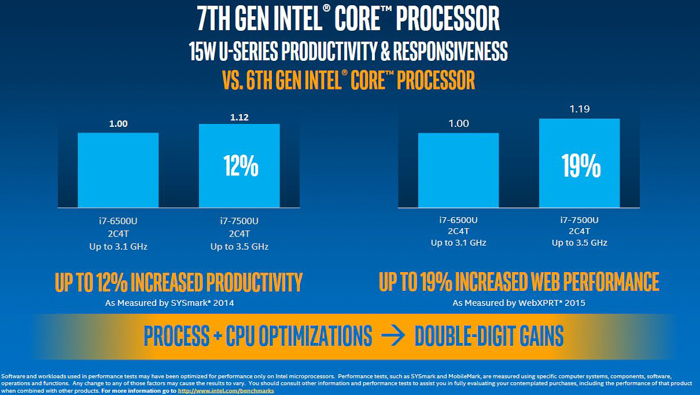
Source: Intel
Of course, the company is only highlighting 12 and 19 percent performance gains, which aren’t nearly as impressive as the “double digit” metric some people usually infer to be 20 percent or higher. But according to Intel’s marketing team and research statistics, the target audience that will be upgrading to Kaby Lake will be those using a PC desktop or portable notebook device that is at least five years old.
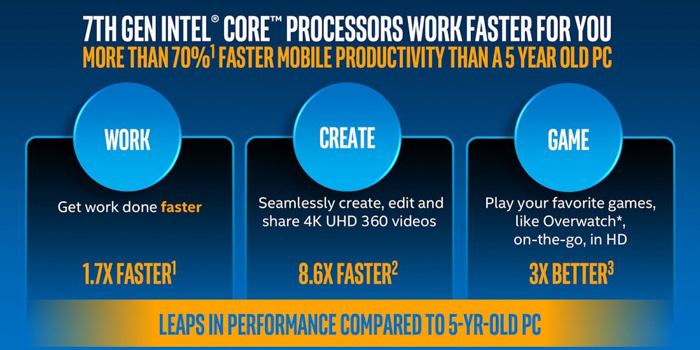
Source: Intel
In fact, Navin Shenoy, the company’s Corporate VP and GM for the Client Computing Group, recently mentioned in his “Introduction to Kaby Lake” blog post that many gamers will see a “threefold improvement compared to a 5-year old PC,” while everyday users will now be able to create, edit and share clips “up to 15 times faster than a 5-year old PC.” Meanwhile, in the notebook market, “what is available now compared to a 5-year old PC” should be noticeably thinner and lighter, often even thinner than some smartphone devices.
Over 100 new designs for laptops and 2-in-1 devices
ASUS was the first to announce at Computex that it will have a new Transformer device based on the Kaby Lake notebook series, while during Intel’s pre-briefing on Tuesday, HP displayed a few new notebooks in the “thin-and-light” category, including an upgraded 13-inch Spectre with an OLED display and a refreshed 15.6-inch Envy x360 with 4K display. According to the press in attendance, there should be a few announcements coming shortly from companies including Acer, Samsung, Lenovo, Sony, Huawei and ZTE, among others. More mainstream notebook designs, including thin-and-light notebooks and 2-in-1 devices may appear in just a few days from now during the IFA trade show in Berlin (September 4th – 7th).
“We are incredibly excited about the strong partnership with our OEM customers and expect more than 100 different 2 in 1s and laptops powered by 7th Gen Intel Core to be available starting in September through this holiday season,” according to Shenoy. “We will share more on the rest of the 7th-gen Intel Core family for desktops and enterprise PCs early next year.”

